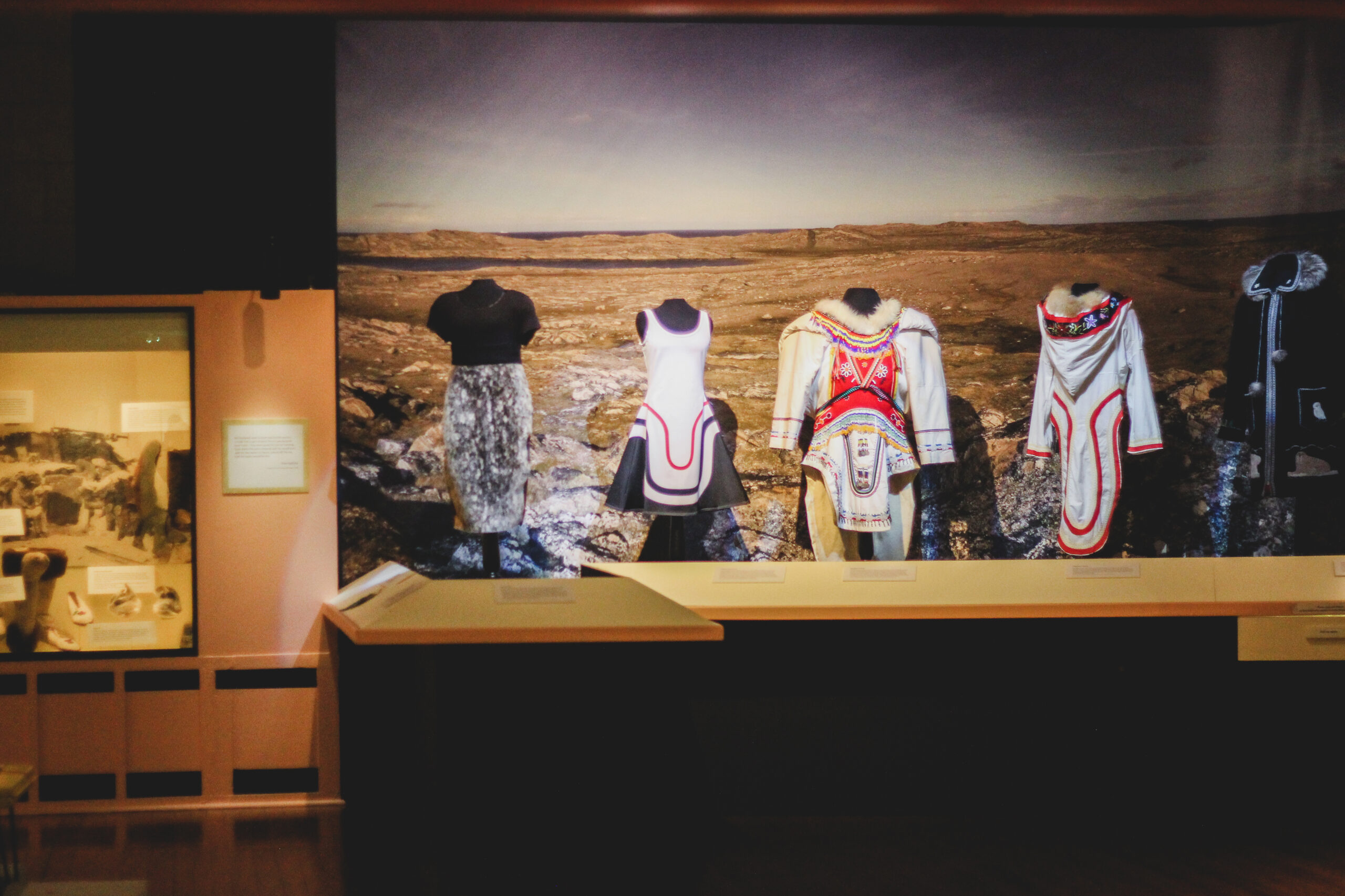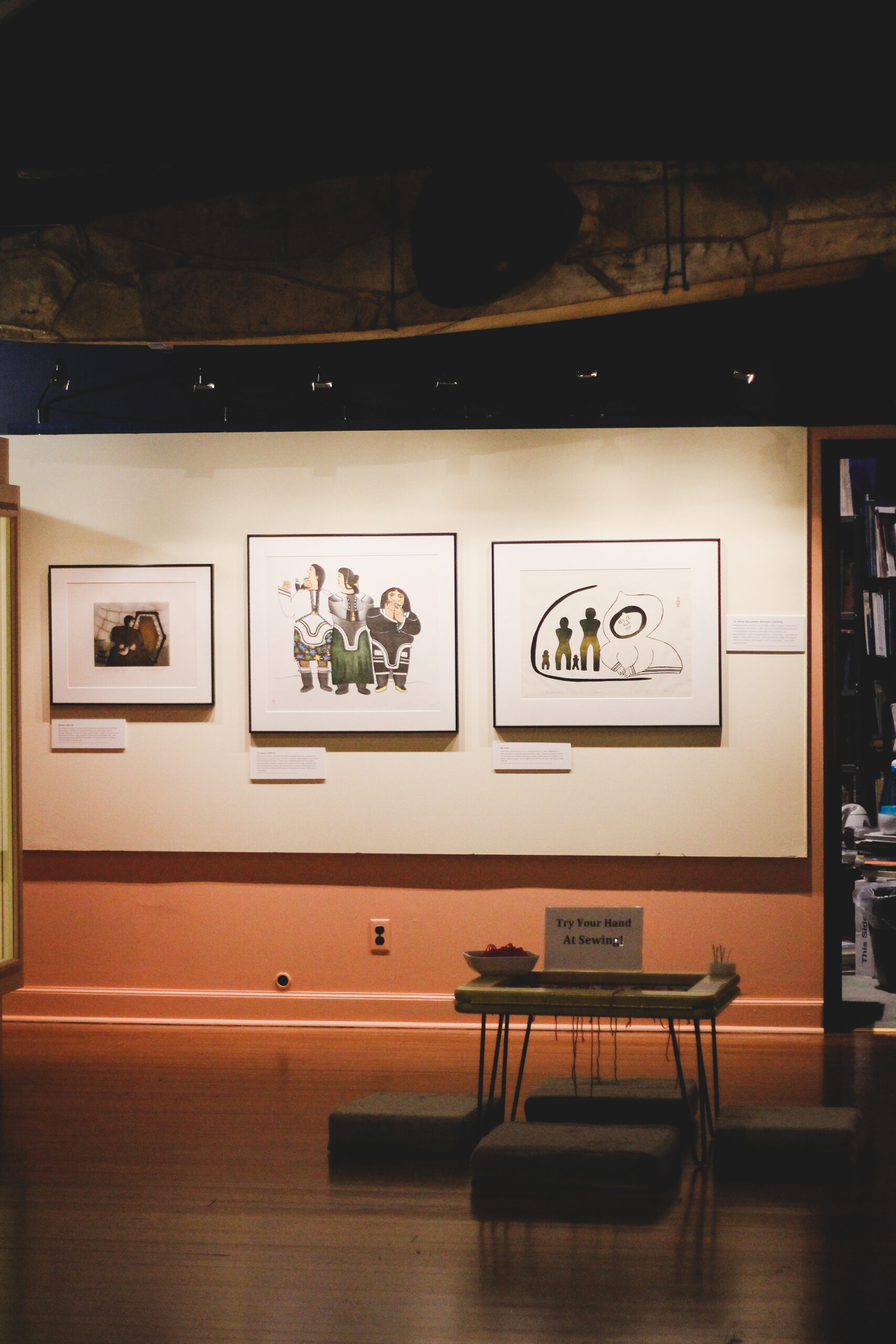Heading north with the Arctic Studies program
November 10, 2017
 Victoria Yu
Victoria YuEach year, there are on average only eight students who focus their studies on the Arctic. Spearheaded by Susan Kaplan, professor of anthropology and director of the Peary-MacMillan Arctic Museum and Arctic Studies Center, the Arctic Studies program is an informal concentration in the earth and oceanographic studies, anthropology and sociology departments that began in 1985. Although its annual cohort is small, Bowdoin has always had strong ties to its northern neighbor.
“In 1860, Professor Paul Chadbourne took a bunch of undergraduates [and] sailed up Maine through the maritimes up to Labrador and the North Atlantic region,” said Kaplan. “They studied natural history and anthropology, and Chadbourne brought back some collections and wrote a publication.”
Soon after, in the 1890s, more professors and students traveled up to Labrador on the Julia Decker. During that same decade, Robert Peary, class of 1877, began his arctic exploration. By 1909, he reached the North Pole and had convinced Donald MacMillan, class of 1898, to join him on an expedition. Peary and MacMillan are two of the most storied Arctic explorers in the world, but Bowdoin has produced, and continues to produce, many other leaders in the field.
Currently, the Arctic studies program offers one to two year-long internships for students after they graduate. Professors also take students on expeditions to the Arctic and invite prominent researchers to campus.
“A lot of these speakers that I’ve had the opportunity to talk to are people that have helped me find jobs within the Arctic studies community, which is phenomenal,” said Maddi Kuras ’18, a biology and environmental studies coordinate major as well as an anthropology minor with a concentration in Arctic studies.
At a recent dinner celebration of the Peary-MacMillan Arctic Museum, Kuras sat next to Andy Platt ’66. Platt was the last person to get a recommendation from MacMillan and the son of Rutherford Platt who was a botanist and photographer on MacMillan’s final expedition in 1954.
“It was such an interesting experience to meet and talk with this person who had a personal relationship with MacMillan, but also someone who has this other personal relationship [to the Arctic] through his father,” said Kuras. “[Rutherford Platt] studied and documented what I want to study and one day document myself … [Andy Platt and I have] kept in touch and it has been wonderful.”
Since the 1860s, Bowdoin students have formed relationships not only with researchers but also with indigenous communities of the Circumpolar North. The museum has collected thousands of photographs of these peoples and their environment.
“Because people from Bowdoin have been going back to the same communities again and again, you can actually watch people grow up by going through our photographs,” said Kaplan. “On the one hand, you can say that this is a great collection about a culture, but it’s also about community histories and family histories. We have this really interesting responsibility to these communities.”
The Arctic Studies program has taken on this responsibility by inviting indigenous peoples to campus and into classrooms. Additionally, most students participating in the program travel North to conduct research in the Arctic and engage with these communities in person. This off-campus experience is essential for students seeking to further their knowledge in the field, especially since the program is not an established major. However, Kaplan hopes to formalize the program in the coming years.
“I think the time has come and my feeling is that we really need young people trained in Arctic issues,” said Kaplan. “The need is so huge to really understand both the human and the environmental systems.”
She hopes that more students participate in this interdisciplinary program and benefit from the mentorship and collaboration with faculty that it provides. Bowdoin’s relationship to the Arctic spans hundreds of years and, for many researchers such as Kaplan herself, is the most significant aspect of the College.
“I would absolutely, definitely recommend the program to other students,” said Kuras. “Knowing that Bowdoin produced two people [Peary and MacMillan] that had such a large hand in expanding our knowledge in an area that a lot of people thought was mystical and terrifying, makes me very proud to be a Bowdoin student, and it makes me very proud to think that I could potentially help to continue that one day.”


Comments
Before submitting a comment, please review our comment policy. Some key points from the policy: